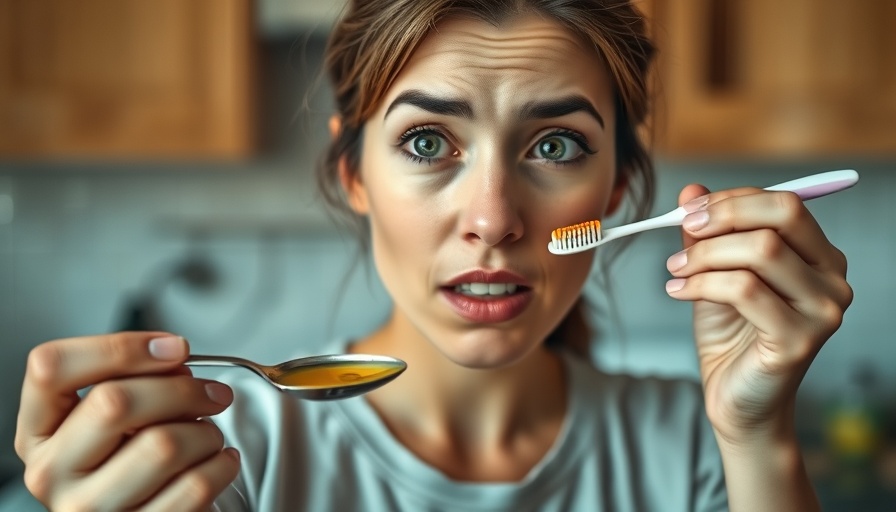
Can Oil Pulling Actually Replace Your Dental Routine?
As the trend of oil pulling gains widespread attention across social media platforms, one question keeps returning to the surface: Can oil pulling effectively replace traditional methods of dental care, such as brushing and flossing? Whitney, a registered dental hygienist, dives deep into this query by thoroughly analyzing the science and evidence-based practices that support effective oral hygiene.
In 'Can Oil Pulling Replace Brushing Teeth? Here's What the Science Says', the discussion explores the validity of oil pulling versus traditional dental care, prompting us to analyze its real implications.
The Basics of Oil Pulling: An Ancient Practice
Oil pulling, which involves swishing oil—typically coconut oil—in your mouth for 15 to 30 minutes before spitting it out, originates from ancient healing practices. While many adherents claim significant benefits, the reality stretches beyond the anecdotal stories shared online. Whitney provides a crystal-clear answer: although some studies suggest potential benefits like bacteria reduction and fresh breath, there is no solid evidence to suggest that oil pulling can replace brushing and flossing, two practices that have a strong backing of clinical research.
Evidence-Based Practices vs. Anecdotal Claims
The key takeaway from Whitney's insights is the importance of differentiating evidence-based dental care from anecdotal claims. Many comments on social media propagate stories of miraculous recoveries attributed to oil pulling; however, anecdotal evidence lacks the stringent controls required for scientific validation. Whitney points out the fallacy in believing that personal testimonials outweigh peer-reviewed research. To truly understand the possible benefits or disadvantages associated with oil pulling, one must analyze various health behaviors and how they interconnect.
Realistic Expectations: The Commitment Required
Another crucial point raised is the time commitment oil pulling demands. While brushing your teeth typically takes just two minutes, effective oil pulling requires about 20 minutes of swishing. Whitney cleverly challenges skeptics, suggesting that if one could commit to a full 20-minute oil pulling session, they could easily incorporate two minutes of brushing into their daily routine. This raises an important narrative about the prioritization of dental hygiene habits. For many, the misconception that oil pulling can serve as a shortcut to proper dental care leads to neglect of hard evidence confirming the efficacy of brushing and flossing.
Potential Risks to Consider
While discussing oil pulling, Whitney also sheds light on the potential risks associated with the practice. These risks include aspiration—where liquid accidentally enters the lungs, leading to severe health complications—jaw strain due to prolonged swishing, and plumbing issues arising from improperly discarding coconut oil in sinks. By bringing these risks to the forefront, Whitney advocates for a well-rounded perspective, emphasizing the responsibility that comes with trying new oral health trends.
Integrating Oil Pulling into Your Dental Routine
If you're intrigued about incorporating oil pulling into your dental hygiene, Whitney firmly advocates for it as an addition rather than a replacement. Recommendations include ensuring a solid foundational routine of brushing twice daily and flossing once daily before introducing oil pulling or other supplemental methods to enhance oral health. This approach not only manages expectations but also highlights the importance of undergoing regular dental check-ups.
The Final Verdict
In conclusion, while oil pulling may offer mild benefits and can be a fun addition for those who enjoy it, it is not the silver bullet to replace established dental hygiene practices. With a large percentage of Americans failing to brush twice a day—an essential baseline for dental health—emphasizing proper brushing and flossing remains the priority. Balancing techniques from both ancient and modern practices can pave the way for optimal oral health. Whitney concludes by inviting viewers to explore her surrounding resources and offering guidance for creating a personalized oral care routine.
 Add Row
Add Row  Add
Add 




Write A Comment